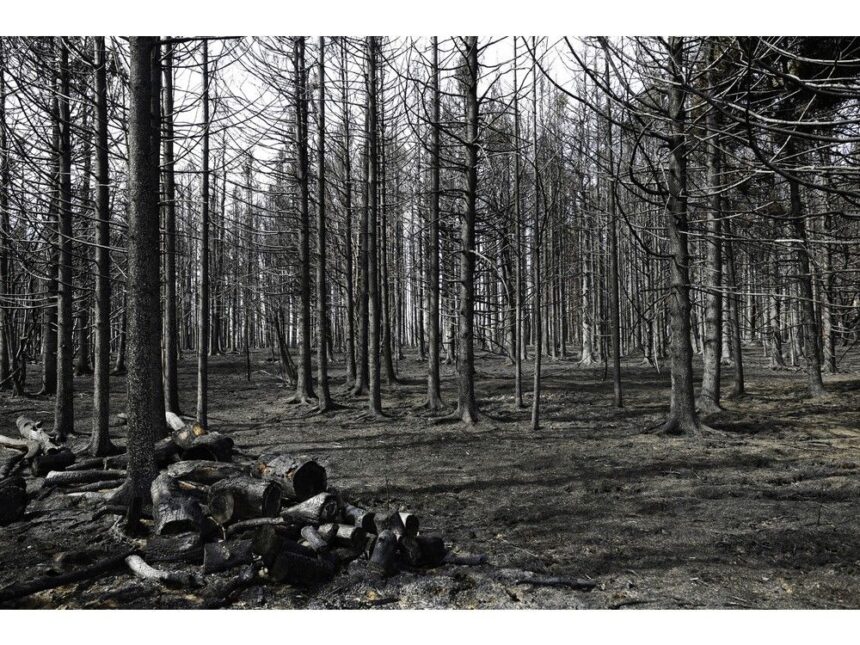A burned wooded area in West Dalhousie after the out-of-control Long Lake wildfire made its way through. Photo by Province of Nova ScotiaArticle contentCooler nights and the rain from Saturday are contributing to progress being made on the Long Lake wildfire, but the blaze remains out of control in Annapolis County.THIS CONTENT IS RESERVED FOR SUBSCRIBERS ONLY.Subscribe now to access this story and more:Unlimited access to the website and appExclusive access to premium content, newsletters and podcastsFull access to the e-Edition app, an electronic replica of the print edition that you can share, download and comment onEnjoy insights and behind-the-scenes analysis from our award-winning journalistsSupport local journalists and the next generation of journalistsSUBSCRIBE TO UNLOCK MORE ARTICLES.Subscribe or sign in to your account to continue your reading experience.Unlimited access to the website and appExclusive access to premium content, newsletters and podcastsFull access to the e-Edition app, an electronic replica of the print edition that you can share, download and comment onEnjoy insights and behind-the-scenes analysis from our award-winning journalistsSupport local journalists and the next generation of journalistsRegister to unlock more articles.Create an account or sign in to continue your reading experience.Access additional stories every monthShare your thoughts and join the conversation in our commenting communityGet email updates from your favourite authorsSign In or Create an AccountorArticle contentOn Monday, the Department of Natural Resources estimated the current size of the fire as 8,465 hectares. And while there was progress being made, the situation is not in hand yet.Article contentArticle contentThe department said the southern end of the fire is the most active area and fire intensity increased with wind on Monday. Helicopters are dropping water on the area so ground crews can safely enter to continue closing the perimeter and advance inward on the fire.Article contentArticle contentA social media post on the weekend said that fire crews have a line of hoses or fire breaks around the entire blaze, but that is not true, DNR said.Article contentIt said fire breaks along some sections of the perimeter were nearing completion Sunday.Article contentEfforts also are focused on the northern end of the fire to prevent spread toward communities along Highway 10 at Trout Lake and Albany.Article contentThere are still a lot of hot spots inside the boundary of the blaze, and lot of unburned land that create problems for crews if it starts to ignite.Article contentThe department said it is trying to get people evacuated back to their home and properties as soon as possible.Article contentOn Monday, there were there were 101 wildland firefighters from Ontario and Quebec working on the fire, and 61 volunteer firefighters and 50 pieces of heavy machinery.Article contentManitoba’s two CL415 planes were being released from the fire Monday, and are being replaced with two Black Hawk helicopters that DNR said in a post are more effective for current needs. Two other helicopters were released, leaving a total of 10 working on the fire, along with four planes from the Northwest Territories.Article contentThere is no rain in the forecast for the area until Friday, when Environment Canada forecasts a 60 per cent chance of showers.Article contentSome 1,000 people have been displaced from their homes by the wildfire that started on Aug. 13.Article contentTwenty homes and 11 other structures have been destroyed in the fire.Article contentAn Environment Canada air quality warning remains in effect for the area due to smoke from the fires.Article content
Most intense fire in Long Lake at southern end of blaze











